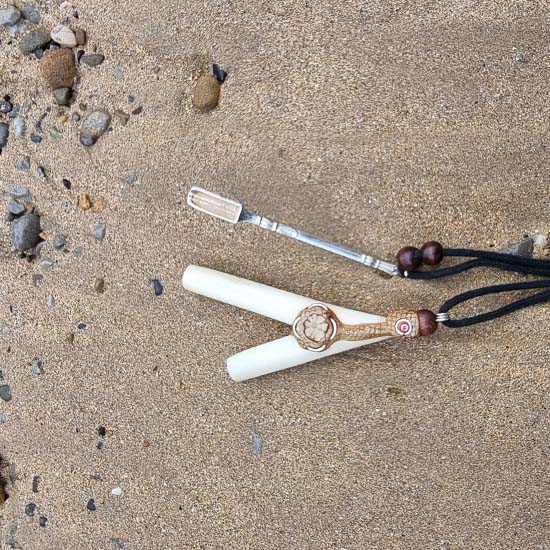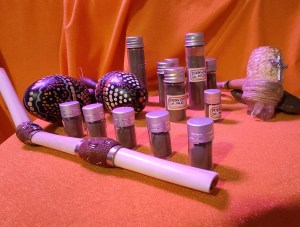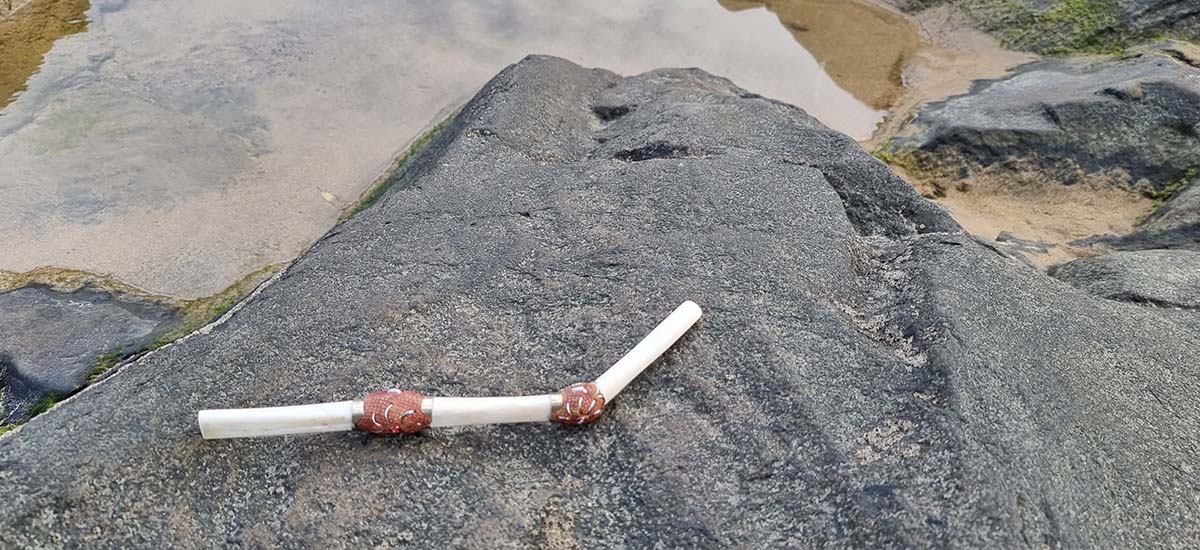Hapé ritual is an ancestral medicine that is enjoyed through its application in the nasal passages, and specific tools such as the kuripe and tepi are used for this purpose. These tools not only facilitate the administration of rapé but can also influence the user’s spiritual experience. In this article, we will explore the differences between the kuripe and the tepi, their benefits, and how to choose the right tool according to your intention and ritual.

What is a Kuripe?
The kuripe is a rapé applicator that allows for self-administration. Its design is simple: a short tube that is placed in the nose, from which the user blows the rapé. This method gives the user complete control over the amount and intensity of the application, allowing for a more personalized experience.
Benefits of the Kuripe:
- Autonomy: It allows the user to decide when and how much rapé to apply, facilitating a deeper introspective process.
- Personal connection: Self-administration creates a stronger bond with the ritual, fostering a more intimate spiritual connection.
- Portability: They are usually lightweight and easy to carry, ideal for those who practice in different locations.
What is a Tepi?
The tepi is an applicator designed for someone else to administer the rapé. It is generally longer than the kuripe and requires the user to be in a comfortable position, often with their eyes closed to enhance connection during the process.
🌿 Join the Sacred Rapé Tribe

We’ve opened an intimate group on Telegram for souls who honor this medicine with respect and purpose. Share rituals, spiritual guidance, and sacred energy in community.
You just need to leave your email to receive access. 🌕 See you within the circle!
Benefits of the Tepi:
- Shared experience: Allowing someone else to administer the rapé creates an atmosphere of community and support in spiritual practice.
- Controlled intensity: An experienced facilitator can adjust the amount and intensity of the rapé, providing a more guided and profound experience.
- More elaborate ritual: The use of a tepi often includes it in more complete ceremonies, adding a level of solemnity to the ritual.

How to Choose Between Kuripe and Tepi
Choosing between a kuripe and a tepi will depend on several factors, including your personal preferences, the intention of the ritual, and the context in which you will practice. Here are some considerations:
- Intention of the Ritual:
- If you are seeking a more intimate and personal experience, the kuripe is ideal for self-exploration and introspection.
- If you want to share the experience with someone else or participate in a more formal ritual, the tepi may be the best option.
- Level of Experience:
- If you are new to using rapé, a kuripe may allow you to familiarize yourself with the practice in a controlled and safe manner.
- If you have experience and are looking to deepen a shared practice, the tepi will offer a unique opportunity for connection with the facilitator.
- Comfort and Preferences:
- Some people feel more comfortable self-administering the rapé, while others prefer the assistance of a facilitator.
- Consider how you feel using each tool and the type of connection you wish to create during the ritual.
Care and Maintenance of Your Kuripe or Tepi
To ensure an optimal and safe experience, it is important to care for and maintain your kuripe or tepi properly:
- Cleaning: Wash your kuripe or tepi with soap and water after each use to prevent the buildup of impurities.
- Storage: Store them in a clean, dry place, away from direct sunlight to preserve their integrity.
- Respect: Treat these tools with respect, as they are sacred instruments in your spiritual practice.
Choosing between a kuripe and a tepi is a personal decision that can influence your experience with rapé. Whether you opt for self-administration or the assistance of a facilitator, the most important thing is that the chosen tool resonates with your intentions and enriches your spiritual practice.

